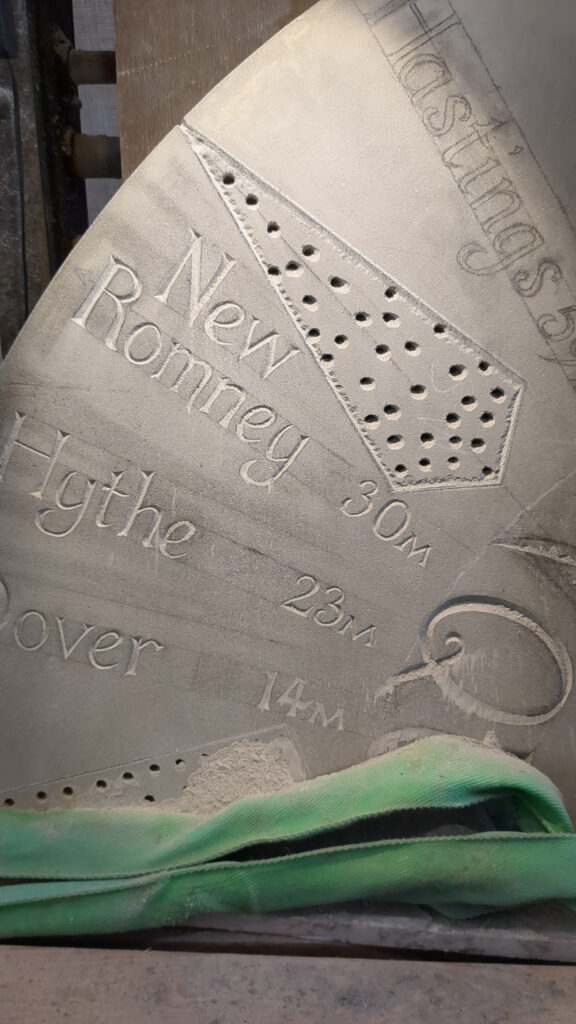2 March, 2025 – 9:35 am
We are not born knowing how to carve an angel’s wing, nor are we taught at college, or at least, they didn’t teach it on my degree. We can observe birds, but they don’t tend to sit still, it’s actually easier to learn from something already carved.
The wings on this angel are beautifully carved, but they look like they have been stuck onto it’s back, the Angel on the larger monument are much better.
At the time of this visit, I was carving my ‘Angel listening’ sculpture, and I was struggling with the wings. Looking at the sculptures, gave me the much needed information to complete my sculpture.
This carving isn’t perfect but it is a learning curve.
These interesting sculptures hanging in the nave were created to commemorate the 100th anniversary of the end of the 1st world war, they are in the form of white crucifixes and have small models of settlements that were destroyed in this conflict, they are a poignant reminder of all needless conflicts.
Beautiful carving in wood by Grinling Gibbons in the choir stalls, because he carved the details individually and joined them together, they can be more easily repaired.
Nelson’s tomb that can be found in the crypt.
I loved this creatures foot, marble allows so much fine detail due not only to it’s density, it’s incredibly fine make up, but also it’s translucent nature.
The flower carved around the urn on the outside of the building are inspirational, as stone carvers, we can’t carve real nature, it’s too fine and delicate, this is where our skill comes in, we carve it to look fine and delicate.
This set of photos show the skill of the early sculptors as opposed to the clumsy nature of the Henry Moore sculpture, it’s not that it is an abstract, but that it has a lumbering quality, indicative of art from that period in history, it doesn’t have a feeling of the love between Mother and child..
The second photo is a sculpture of John Donne, I based some of my early degree sculpture on his poems that I studied for A-level English.
Next in line is a beautiful monument to John Howard a prison reformer, you can read all about him and the other monuments here and J. M.W Turner, what I love about this sculpture is, that instead of trying to carve his instruments in the stone, they are made of wood.
Finally, and I love these picture, because the design and practicalities of carving transcend time.
During my art history lessons at college, we were shown images of some of the earliest statues, carved with a tree stump or a pillar to add stability and give the illusion of weightlessness. You can see this is the statues above, but it is also a method of creating fine carving such as the pigeons. The legs and the tail is supported by the body and the branch, there’s very little exposed fragile carving.
I had recently been commissioned to carve a pair of pigeons for a local pub and although I knew in my head what they would look like and had done a rough sketch, it’s can be difficult for the layperson to visualise in 3D. So you can imagine my delight when I saw what I was imagining and I was able to send a photo to my customers.
Obviously wood can take finer detail and more undercutting than the stone that I was carving.
Through history we learn from observation and while we may not get it right first time, like my angel wings, the next one will be better.
Posted in Carrie's News | No Comments »






























































































